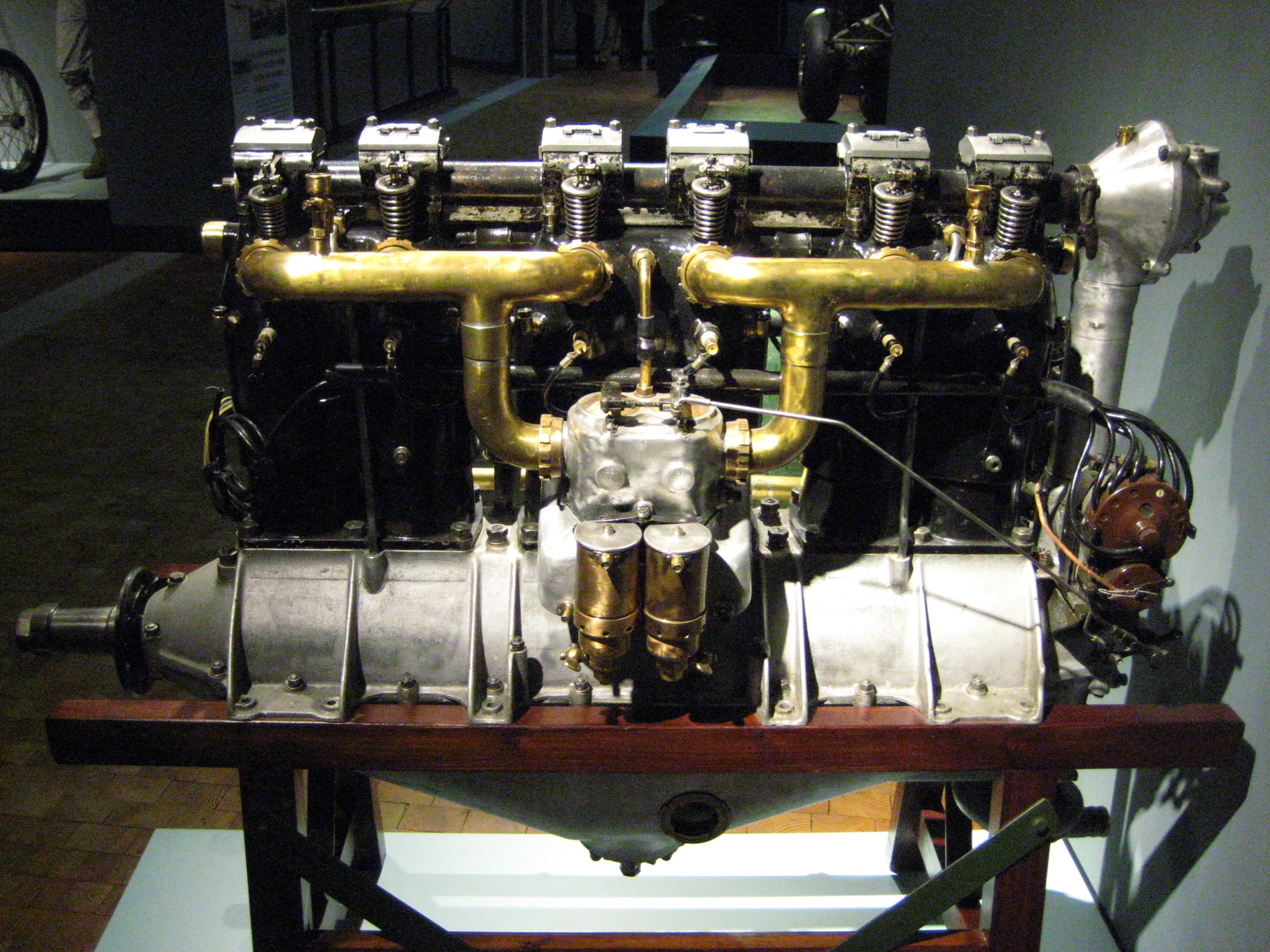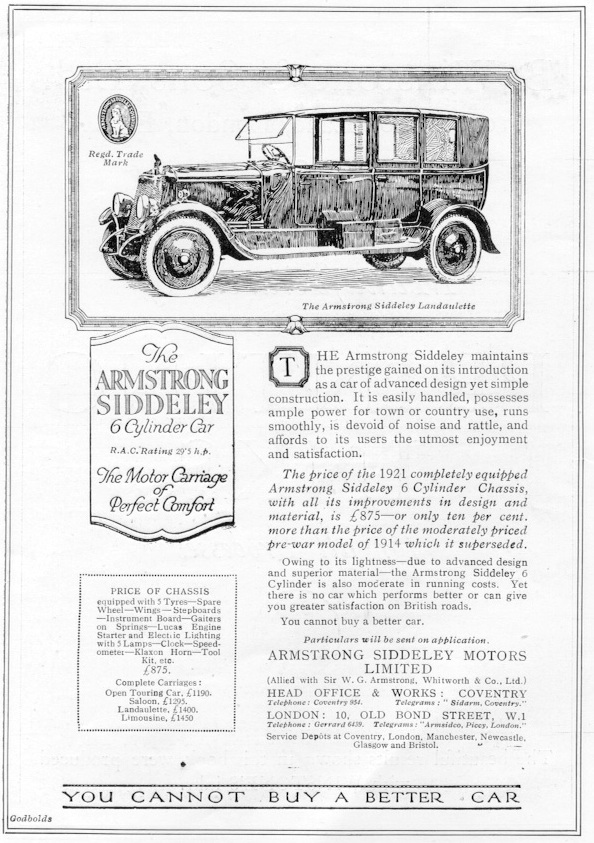|
Junkers F13
The Junkers F 13 is the world's first all-metal transport aircraft, designed and produced by the German aircraft manufacturer Junkers. Produced shortly after the end of the First World War, it was a cantilever-wing monoplane with enclosed accommodation for four passengers and a two seat open cockpit. Like all Junkers duralumin-structured designs, from the 1918 J 7 to the 1932 Ju 46, (some 35 models), it has an aluminium alloy (duralumin) structure entirely covered with Junkers' characteristic corrugated and stressed duralumin skin. Internally, the wing was built up on nine circular cross-section duralumin spars with transverse bracing. All control surfaces were horn balanced. A total of 322 aircraft were manufactured, a considerably large number for a commercial airliner of the era, and were operated all over the world. It accounted for over a third of air traffic in the early 1920s. It remained in production for thirteen years and in commercial service for more than thirty ... [...More Info...] [...Related Items...] OR: [Wikipedia] [Google] [Baidu] |
WikiProject Aircraft
A WikiProject, or Wikiproject, is an affinity group for contributors with shared goals within the Wikimedia movement. WikiProjects are prevalent within the largest wiki, Wikipedia, and exist to varying degrees within Wikimedia project, sibling projects such as Wiktionary, Wikiquote, Wikidata, and Wikisource. They also exist in different languages, and translation of articles is a form of their collaboration. During the COVID-19 pandemic, CBS News noted the role of Wikipedia's WikiProject Medicine in maintaining the accuracy of articles related to the disease. Another WikiProject that has drawn attention is WikiProject Women Scientists, which was profiled by ''Smithsonian Magazine, Smithsonian'' for its efforts to improve coverage of women scientists which the profile noted had "helped increase the number of female scientists on Wikipedia from around 1,600 to over 5,000". On Wikipedia Some Wikipedia WikiProjects are substantial enough to engage in cooperative activities with outsi ... [...More Info...] [...Related Items...] OR: [Wikipedia] [Google] [Baidu] |
Stressed Skin
In mechanical engineering, stressed skin is a rigid construction in which the skin or covering takes a portion of the structural load, intermediate between monocoque, in which the skin assumes all or most of the load, and a rigid frame, which has a non-loaded covering. Typically, the main frame has a rectangular structure and is Polygon triangulation, triangulated by the covering; a stressed skin structure has localized compression (physical), compression-taking elements (rectangular frame) and distributed tension (physics), tension-taking elements (skin). Description A simple framework box with four discrete members is not inherently rigid as it will distort from being square under relatively light loads; however, adding one or more diagonal element(s) that take either tension or compression makes it rigid, because the box cannot deviate from right angles without also altering the diagonals. Sometimes the diagonal elements are flexible like wires, which are used to provide te ... [...More Info...] [...Related Items...] OR: [Wikipedia] [Google] [Baidu] |
Bristol Jupiter
The Bristol Jupiter is a British nine-cylinder single-row piston radial engine that was built by the Bristol Aeroplane Company. Originally designed late in World War I and known as the Cosmos Jupiter, a lengthy series of upgrades and developments turned it into one of the finest engines of its era. The Jupiter was widely used on many aircraft designs during the 1920s and 1930s. Thousands of Jupiters of all versions were produced, both by Bristol and abroad under licence. A turbo-supercharged version of the Jupiter known as the Orion suffered development problems and only a small number were produced. The "Orion" name was later re-used by Bristol for an unrelated turboprop engine. The Bristol Jupiter was licensed by the Soviet Union as the Shvetsov M-22. Design and development The Jupiter was designed during World War I by Roy Fedden of Brazil Straker and later Cosmos Engineering. The first Jupiter was completed by Brazil Straker in 1918 and featured three carburettors, e ... [...More Info...] [...Related Items...] OR: [Wikipedia] [Google] [Baidu] |
Inline Engine (aviation)
In aviation, an inline engine is a reciprocating engine with cylinder bank, banks of cylinders, one behind another, rather than rows of cylinders, with each bank having any number of cylinders, although more than six is uncommon. The major reciprocating-engine alternative configuration is the radial engine, where the cylinders are placed in a circular or "star" arrangement. The term "inline" is used somewhat differently for aircraft engines than automotive engines. For automotive engines, the term ‘inline’ refers only to straight engines (those with a single bank of cylinders). But for aircraft, ‘inline’ can also refer to engines which are not of the straight configuration, such as V, H, or horizontally opposed. Inline engine configurations ;Straight engine, Straight: Engines with a single bank of cylinders which can be arranged at any angle but typically upright or inverted, (e.g. upright ADC Cirrus, inverted de Havilland Gipsy Major). ;V engine, V:Engines with two bank ... [...More Info...] [...Related Items...] OR: [Wikipedia] [Google] [Baidu] |
Siddeley Puma
The Siddeley Puma is a British aero engine developed towards the end of World War I and produced by Siddeley-Deasy. The first Puma engines left the production lines of Siddeley-Deasy in Coventry in August 1917, production continued until December 1918. In operational service, the engine was unreliable and failed to deliver its rated power. At least 4,288 of the 11,500 ordered engines were delivered, orders were cancelled following the Armistice. Production was continued under the name Armstrong Siddeley Puma when the manufacturer was bought by Armstrong Whitworth and became Armstrong Siddeley. Background The Puma was based on an engine designed by Beardmore Halford Pullinger (BHP) which was selected for production on the recommendation of the Internal Combustion Engine Sub-Committee of the Advisory Committee for Aeronautics in March 1917, despite the engine being still under test. Although BHP's design was projected to produce 300 hp (224 kW) the engine's output came in b ... [...More Info...] [...Related Items...] OR: [Wikipedia] [Google] [Baidu] |
Armstrong Siddeley
Armstrong Siddeley was a British engineering group that operated during the first half of the 20th century. It was formed in 1919 and is best known for the production of luxury vehicles and aircraft engines. The company was created following the purchase by Armstrong Whitworth of Siddeley-Deasy, a manufacturer of luxury motor cars that were marketed to the top echelon of society. After the merge of companies, this focus on quality continued throughout in the production of cars, aircraft engines, gearboxes for tanks and buses, rocket and torpedo motors, and the development of railcars. Company mergers and takeovers with Hawker Aviation and Bristol Aeroplane Company, Bristol Aero Engines saw the continuation of the car production which ceased in August 1960. The company was absorbed into the Rolls-Royce Limited, Rolls-Royce conglomerate which was interested in the aircraft and aircraft engine business. Eventually, the remaining spares and all motor car interests were sold to the ... [...More Info...] [...Related Items...] OR: [Wikipedia] [Google] [Baidu] |
Mercedes D
Mercedes may refer to: People * Mercedes (name), a Spanish feminine name, including a list of people and fictional characters with the given name or last name Automobile-related * Mercedes (marque), the pre-1920 brand name of German automobile models and engines that are built by Daimler Motors company * Mercedes-Benz, the post-1920 German brand of automobiles, engines, and trucks now owned by the Mercedes-Benz Group * Mercedes-AMG, a subsidiary of Daimler AG that builds customized and high performance Mercedes-branded automobiles * Mercedes-Benz in Formula One, the Mercedes Formula One racing team, currently known as Mercedes-AMG Petronas Motorsport * Mercedes-Benz in motorsport, its activities in sportscar racing, rallying, Formula Three, DTM, V8 Supercars Australia and Formula One * American Mercedes (1904 automobile), a company licensed to build Mercedes automobiles in America Places * Mercedes, Buenos Aires Province, Argentina ** Mercedes Partido, Argentina * Merce ... [...More Info...] [...Related Items...] OR: [Wikipedia] [Google] [Baidu] |
Aerodynamics
Aerodynamics () is the study of the motion of atmosphere of Earth, air, particularly when affected by a solid object, such as an airplane wing. It involves topics covered in the field of fluid dynamics and its subfield of gas dynamics, and is an important domain of study in aeronautics. The term ''aerodynamics'' is often used synonymously with gas dynamics, the difference being that "gas dynamics" applies to the study of the motion of all gases, and is not limited to air. The formal study of aerodynamics began in the modern sense in the eighteenth century, although observations of fundamental concepts such as aerodynamic drag were recorded much earlier. Most of the early efforts in aerodynamics were directed toward achieving Aircraft#Heavier-than-air – aerodynes, heavier-than-air flight, which was first demonstrated by Otto Lilienthal in 1891. Since then, the use of aerodynamics through mathematical analysis, empirical approximations, wind tunnel experimentation, and computer si ... [...More Info...] [...Related Items...] OR: [Wikipedia] [Google] [Baidu] |
Dessau
Dessau is a district of the independent city of Dessau-Roßlau in Saxony-Anhalt at the confluence of the rivers Mulde and Elbe, in the ''States of Germany, Bundesland'' (Federal State) of Saxony-Anhalt. Until 1 July 2007, it was an independent city. The population of Dessau is 67,747 (Dec. 2020). Geography Dessau is situated on a floodplain where the Mulde flows into the Elbe. This causes yearly floods. The worst flood took place in the year 2002, when the Waldersee district was nearly completely flooded. The south of Dessau touches a well-wooded area called Mosigkauer Heide. The highest elevation is a 110 m high former rubbish dump called Scherbelberg in the southwest of Dessau. Dessau is surrounded by numerous parks and palaces that make it one of the greenest towns in Germany. History Dessau was first mentioned in 1213. It became an important centre in 1570, when the Principality of Anhalt was founded. Dessau became the capital of this state within the Holy Roman Empire. ... [...More Info...] [...Related Items...] OR: [Wikipedia] [Google] [Baidu] |
Hugo Junkers
Hugo Junkers (3 February 1859 – 3 February 1935) was a German aircraft engineer and aircraft designer who pioneered the design of all-metal airplanes and flying wings. His company, Junkers Flugzeug- und Motorenwerke AG (Junkers Aircraft and Motor Works), was one of the mainstays of the German aircraft industry in the years between World War I and World War II. His multi-engined, all-metal passenger and freight planes helped establish airlines in Germany and around the world. In addition to aircraft, Junkers also built both diesel and petrol engines and held various thermodynamic and metallurgical patents. He was also one of the main sponsors of the Bauhaus movement and facilitated the move of the Bauhaus from Weimar to Dessau (where his factory was situated) in 1925. Amongst the highlights of his career were the Junkers J 1 of 1915, the world's first practical all-metal aircraft, incorporating a cantilever wing design with virtually no external bracing, the Junkers F ... [...More Info...] [...Related Items...] OR: [Wikipedia] [Google] [Baidu] |





